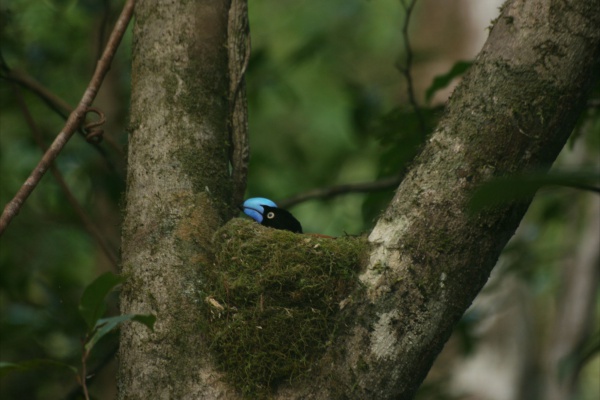North Eastern Wildlife Photography Tour - Masoala
Masoala National Park - Nosy Mangabe Special Reserve - Maroantsetra - Marojejy National Park - Daraina Reserve
14 days & 13 nights
Highlights
Masoala National Park: Observation of Red ruffed lemur and Helmet vanga
Nosy Mangabe Special Reserve: Observation of the Black-and-white ruffed lemur and tiny Antongil leaf chameleon
Maroantsetra: Observation of the colourful Tomato frog
Marojejy National Park: Observation of the Silky sifaka and Climbing mantellas
Daraina Reserve: Observation of the Golden-crowned sifaka
When do go
Feasibility: January to December
Best season: April to December
Tour description
Day 1: Tana - Maroantsetra - Masoala National Park (L/D)
Flight from Tana to Maroantsetra where a guide will meet and assist you. Transfer from the airport to the harbour (about 45 minutes) and thereafter by speed boat to reach Masoala peninsula. The boat trip lasts about 2 hours and if we are lucky we may encounter dolphins and Humpback whales during July and September. Arrival at the lodge. In the afternoon, time to relax on the beach, for swimming or exploring the surroundings. Nightwalk in the forest surrounding the lodge to see some night-active lemurs (Masoala mouse lemur, Brown mouse lemur, snakes and frogs). Overnight in the lodge in Masoala.
Day 2: Masoala National Park (B/L/D)
Established in 1997, Masoala National Park is Madagascar's largest protected area. The lush rainforests of northeastern Madagascar are the most diverse biome on the island. This tour offers the best of Madagascar’s fauna and flora. Many of the island’s most spectacular endemic birds are restricted to this rainforest, and there are opportunities to spot species such as Short-legged ground-roller, Scaly ground-roller, Red-fronted coua, Blue coua, Madagascar blue pigeon, Madagascar pygmy-kingfisher and Madagascar paradise-flycatcher. In the surroundings of the camp we might encounter the bizarre Lowland streaked tenrec. In the afternoon, relaxing on the beach, swimming in the bay or exploring the surroundings of the hotel. During a nightwalk we should find the Masoala woolly lemur, Dwarf lemur and Brown mouse lemur. The area’s reptile and amphibian fauna is equally dramatic; amongst it are countless colourful and photogenic frogs, chameleons and geckos. We may even encounter the Big-nosed chameleon and two species of incredibly camouflaged leaf-tailed gecko. Dinner and overnight in the lodge in Masoala.
Day 3: Masoala (B/L/D)
Breakfast and early morning start to observe the birds in Masoala National Park. In most years we are even lucky to see a nest of the marvelous Helmet vanga. Today will be a long and strenuous day of hiking in secondary forest inside and outside the national park, with loads of birding along the way. It will be an adventure to find the Madagascar blue pigeon, Lesser vasa parrot, Cuckoo-roller and Madagascar paradise-flycatcher. We will look for the endemic Red-breasted coua, Brown mesite and handsome Scaly ground-roller and Short-legged ground-roller. We also stand a good chance of finding the elusive Bernier's vanga, which prefers the pandanus palm swamps. Although sightings are not likely, the peninsula is also home to the magnificent rail. During the search, we will find lots of other seabirds, including Madagascar pratincole, Brown noddy, and tern colonies which are rarely seen in most of Madagascar. The afternoon is free: relax, swim or walk on the beach. Nightwalk in another part of the forest near the camp to observe the Madagascar scops-owl, Madagascar nightjar and nocturnal lemurs. Dinner and night in the Lodge.
…
